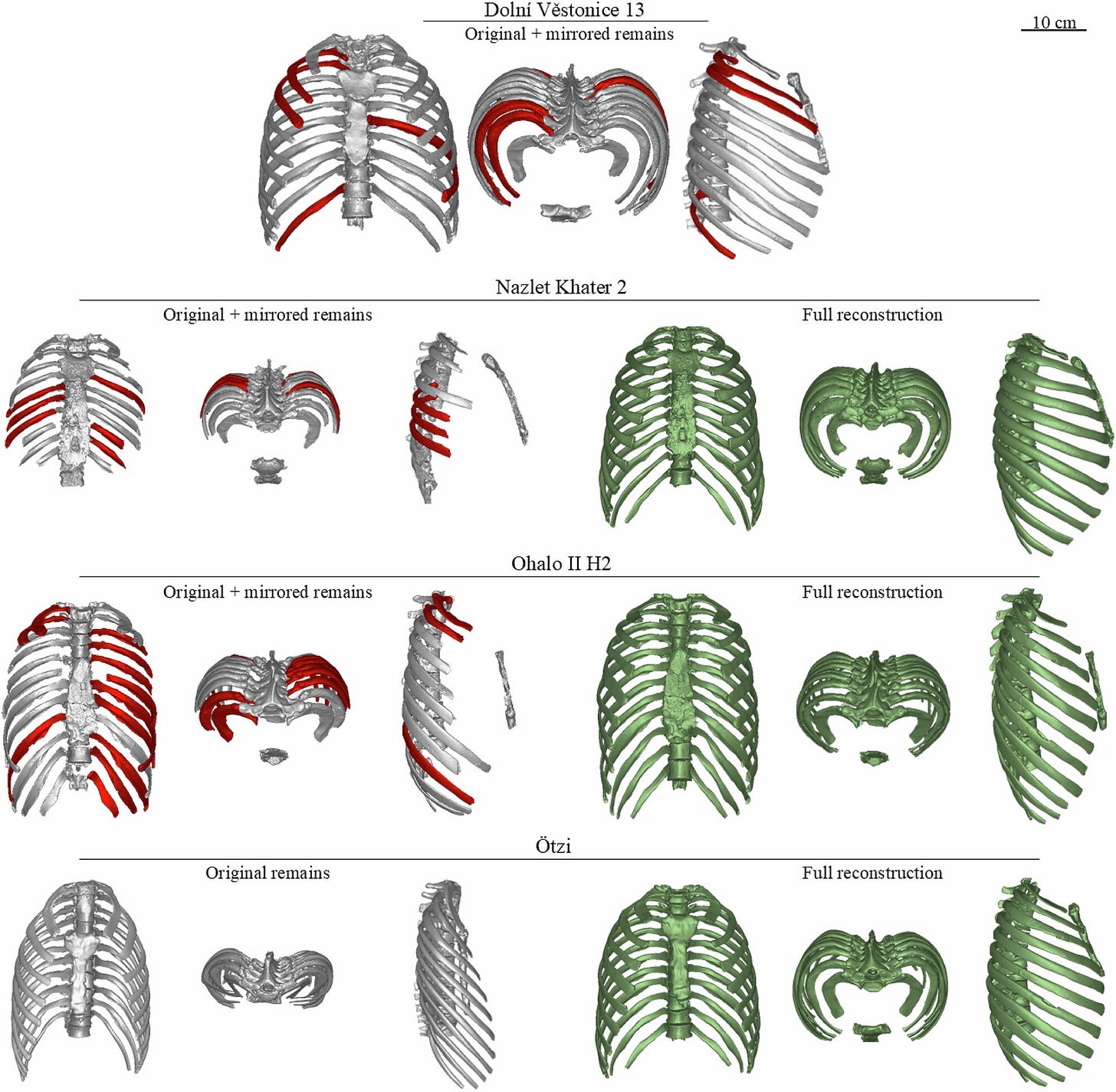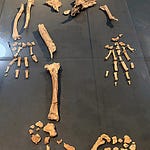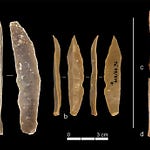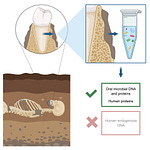In a sterile lab in Madrid, four ancient skeletons—one exhumed from a glacier, another from a Paleolithic burial pit in Egypt—are being digitally resurrected one rib at a time. Their remains, dispersed across millennia and climates, hold an anatomical key to understanding how Homo sapiens adapted not only through tools, fire, and language, but through the very scaffolding of the chest.

A new study published in Communications Biology1 reconstructs, for the first time, the ribcages of four Upper Paleolithic Homo sapiens. The findings complicate the standard picture of the human thorax as inherently slender. Instead, the study argues that our species evolved a far more varied range of thoracic shapes—largely influenced by climate.
Four Men, Four Climates, One Species
The four fossils span over 30,000 years. There is Nazlet Khater 2, a miner from Upper Egypt buried nearly 38,000 years ago. Ohalo II H2, a Levantine forager dated to 23,000 years before present. Dolní Věstonice 13, unearthed from the cold plains of Central Europe. And then, of course, there’s Ötzi—the famously mummified “Iceman” who perished in the Alps 5,300 years ago.
Digital reconstructions of their ribcages show something unexpected: their shapes vary substantially based on geography. The Egyptians and Levantines had smaller, more cylindrical thoraxes. Their chest cavities were not unlike those of contemporary humans from warm or temperate climates. In contrast, Dolní Věstonice 13 had a ribcage nearly as large as those of Neanderthals and as wide as the Nariokotome Boy—Homo erectus from Kenya.
"Slender ribcages seem to be unique to modern humans, but stockier thoracic forms like those found in Neanderthals are also part of our species’ range," the researchers wrote.
Ötzi’s ribcage sits somewhere in the middle. It has the shape of a temperate-climate human but with slightly larger dimensions—perhaps, as the researchers suggest, an adaptation to seasonal migrations through alpine environments.
Rewriting the Human Chest
The thoracic cage is more than a skeletal envelope. It reflects how a species breathes, moves, and conserves heat. Anthropologists have long debated whether the “gracile” (slender) frame of Homo sapiens is a hallmark of the species or a relatively recent innovation. Earlier reconstructions of Homo erectus, such as the Nariokotome Boy, had suggested a similarly narrow frame. But recent work has flipped that assumption.
More robust reconstructions of Homo erectus and Neanderthal ribcages have shown that wide, deep thoraxes may be the ancestral state.
"There is no single Bauplan for modern humans," said study lead José M. López-Rey. "Instead, we see an environmentally plastic anatomy, responsive to climate and locomotor stress."
The study applied 3D geometric morphometrics to estimate thoracic dimensions using fossil vertebrae and rib fragments. It also compared these fossils to over 50 modern humans from across the globe, grouped by climate. The findings track neatly with ecological rules that have governed animal morphology for centuries.
Bergmann and the Bauplan
The principles guiding this study are not new. Bergmann’s rule, proposed in the 19th century, suggests that animals in colder climates have bulkier bodies to conserve heat. Allen’s rule builds on this, stating that shorter limbs and more compact body shapes are advantageous in frigid environments. Human ribcages, it turns out, follow suit.
Dolní Věstonice 13 lived during the Last Glacial Maximum, when mammoths roamed the European steppe and average winter temperatures could plummet far below freezing. His barrel-shaped thorax may have helped him retain core warmth and process larger volumes of air. This ribcage is anatomically distinct from those of Nazlet Khater 2 or Ohalo II H2, despite them all being members of the same species.
“Such thoracic proportions could have been beneficial for surviving that hostile climate,” the study notes.
Beyond Bones: The Role of Culture and Mobility
Ötzi, the Iceman, adds another dimension to this story. His ribcage shows intermediate traits, both in shape and size. This mixed morphology could reflect his lifestyle as a mobile herder, traversing mountains on foot, adapting to seasonal temperature swings.
Though the chest is shaped by bones, it tells us much about behavior. A wider ribcage may not simply be a response to cold but also to metabolic demands, physical workload, and altitude. Nazlet Khater 2’s skeletal features suggest intensive labor, possibly related to mining, while Ohalo II H2 shows evidence of habitual foraging.
Climate, Genes, and Equifinality
Not all similarities stem from shared ancestry. Anatomical convergence—what anthropologists call equifinality—can lead to similar shapes in different evolutionary paths. The study highlights this possibility in Dolní Věstonice 13, whose ribcage shape mirrors that of the Nariokotome Boy despite their species being separated by over a million years.
“Climatic adaptations might explain these similarities more than shared genetic proximity,” the authors argue.
This challenges a common bias in paleoanthropology that assumes Neanderthal-like thoraxes are foreign to Homo sapiens. Instead, this new research demonstrates that such robust forms were likely always part of our repertoire.
A Ribcage for Every Climate
These findings resonate with broader trends in human evolutionary biology. Our species has long been defined by variability rather than uniformity. Whether through skin tone, skull shape, or limb proportions, Homo sapiens displays an extraordinary degree of plasticity.
“Body proportions might depend not only on genetics but also on the climatic plasticity of our species,” the researchers conclude.
The ribcage, often overlooked in favor of the cranium or pelvis, is now emerging as a crucial anatomical feature in decoding how humans lived—and adapted—in vastly different environments.
Additional Related Research
Here are studies that expand on or complement this new research:
Pearson, O. M. (2000). Postcranial remains and the origin of modern humans. Evolutionary Anthropology, 9, 229–247. https://doi.org/10.1002/1520-6505(2000)9:6<229::AID-EVAN1>3.0.CO;2-4
Bastir, M. et al. (2020). Rib cage anatomy in Homo erectus suggests a recent evolutionary origin of the studied upper diaphragms. Nature Ecology & Evolution, 4(9), 1178–1187. https://doi.org/10.1038/s41559-020-1227-2
Gómez-Olivencia, A. et al. (2018). 3D virtual reconstruction of the Kebara 2 Neandertal thorax. Nature Communications, 9(1), 4387. https://doi.org/10.1038/s41467-018-06803-z
Ruff, C. B. (2023). The estimation and evolution of hominin body mass. Evolutionary Anthropology, 32(6), 223–237. https://doi.org/10.1002/evan.22038
López-Rey, J. M., D’Angelo del Campo, M. D., Seldes, V., García-Martínez, D., & Bastir, M. (2024). Eco-geographic and sexual variations in the Homo sapiens ribcage. Evolutionary Anthropology, 33, e22040. https://doi.org/10.1002/evan.22040
López-Rey, J. M., Crevecoeur, I., May, H., Nadel, D., Palancar, C. A., Gómez-Recio, M., García-Martínez, D., & Bastir, M. (2025). Fossil ribcages of Homo sapiens provide new insights into modern human evolution. Communications Biology, 8(1), 1038. https://doi.org/10.1038/s42003-025-08472-3









